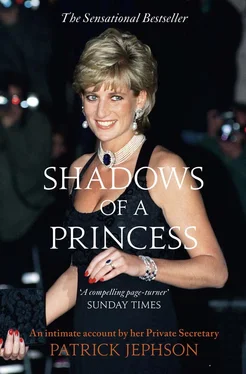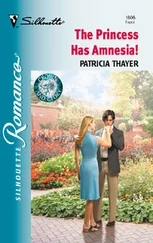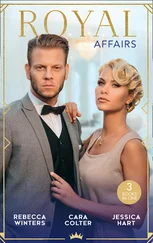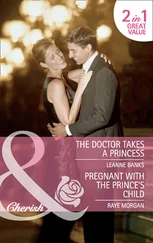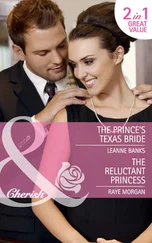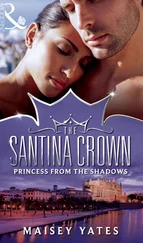To compensate for the lack of united leadership at the top, the Wales support organization had for some time been making its own arrangements to adapt to the unpalatable truth. Huge amounts of energy were diverted into concealing the real state of the marriage, and still more were expended on structuring our bosses’ public lives to minimize friction between them. It is a tempting but pointless exercise to imagine what more could have been achieved if this energy had been available to support the global influence of a Prince and Princess who were able to work as a team.
My introduction to these realities had occurred during a visit by the Prince and Princess to the Glasgow Garden Festival in my early days in office in May 1988. Not unusually, Their Royal Highnesses had been apart in the days preceding the engagement but obviously had to appear as a couple, if not happily, then at least willingly united when they arrived at the Festival. They therefore made their ways in separate aircraft to what, fortunately, turned out to be a simultaneous rendezvous at Glasgow airport. Logistically this was no mean feat, but, as I came to realize, the Queen’s Flight, the police and the respective staffs were not short of practice in this manoeuvre.
On the flight to Scotland I had been conscious of a heightened tension, but in my happy lack of awareness had ascribed it only to the prospect of an exciting day in the sunshine in front of what were sure to be huge crowds. Later, I came to recognize the nervous giggles interspersed with brooding introversion as characteristic of the Princess’s agitation at the prospect of working with her husband. Also, it was only later that I realized the significance of her frequent trips to the royal loo. ‘Bulimia’ was a word I did not even know how to spell in 1988.
John Riddell was in charge of the engagement. As ever, his charm and studied absent-mindedness produced the intended mood of amused tolerance in the Princess as we arrived in Glasgow. Inside, he must have felt he was defusing a ticking time bomb. In this he was like many senior courtiers who lacked the benefit of regular contact with her – their understandable inclination was to treat her like a beautifully wrapped parcel of unstable Semtex. His only acknowledgement of the unspoken matrimonial drama which waited on the tarmac was to smile reassuringly at her as we left the plane and say, ‘Let’s hope we all reach the end of the day in the same happy mood we started it in!’
In bright sunshine the Prince and Princess met by their aircraft, brushed cheeks for a fraction of a second and climbed into their car. The day was a success. The beautiful weather, happy crowds and grand scale of the event perfectly set off their own professionalism.
They were an unbeatable double act who could anticipate each other’s moves, instinctively work a crowd and betray by neither a word nor a gesture the fact that they would jump back in their separate planes as soon as duty released them. In the brief moments of semi-privacy, however, away from all but the familiar company of their staffs, they might have been on separate engagements. Not a word or a glance passed between them.
Only the atmosphere of relief on the homeward journey, and the veiled references to disaster averted, alerted my novice’s consciousness to the fact that we were playing a game. There was only one rule: nothing must be said to disturb the myth of permanence that was now the marriage’s only certainty.
Competition between the stars of our show was never far below the surface, and set-piece joint events usually brought it into the open. A garden party at Buckingham Palace was the perfect opportunity for some rather pointed sparring. For those of us who saw beyond the myth this was entertaining too, in a painful way.
It was the sort of obligatory event that went into the Princess’s diary automatically, at least twice every year. However much she denied it, I think she secretly rather looked forward to these occasions. The reason was not hard to find. It came to me at the start of one afternoon’s proceedings, as I paraded in my top hat and tails at the edge of the Buckingham Palace lawn along with other members of the Prince and Princess’s senior household. At our backs a lawn the size of a football pitch was crowded with a multicoloured mob of deserving guests from all walks of life throughout the Commonwealth.
Three approximately equal gangways had been carved through this crowd by Beefeaters in full ceremonial dress. The idea was that three royal couples would descend the steps from the Buckingham Palace Bow Room door on to the lawn and split up, one couple per lane. They would then proceed through the crowd at a slow pace towards their reward: tea in a special marquee at the other end of the lawn with members of the diplomatic community.
In effect, it was a time-honoured and rather formal version of the walkabout which I had come to know so well on the streets of provincial Britain. This time, however, the sun was shining, the crowds were all in their Sunday best, if not better, and the Princess was dressed in clothes she might happily have appeared in on Ladies’ Day at Ascot. In other words, despite the formal royal setting and order of events and ceremonies which had changed little since Victoria’s time, here was a chance for the Princess to do what she did best, in front of an audience drawn from those she sometimes saw as her greatest critics, namely other members of the royal family.
Apart from the Queen, who was naturally the symbolic focus of all attention, with her Palace as a backdrop and her Guards band playing her anthem, no one outshone the Princess. She stood statuesquely, slightly to one side, eyes demurely downcast, an object of wonder and curiosity, holding the gaze of several thousand eyes.
She and the Prince decorously descended the steps on to the lawn and the show began. The private secretary bowed, I bowed, we all bowed. The Prince looked grumpy, the Princess looked radiant. Then I detected a wicked edge to the radiance. It came, I was sure, from the certain knowledge that she was about to outshine her husband in public and intended to derive no little amusement from the task.
She winked at me and I fell into step slightly behind her. She took the right-hand side of the lane and the Prince took the left. The Prince’s equerry and I then spent the next 45 minutes striding back and forth ahead of our royal charges, ensuring that some 30 or so preselected guests were hauled to the front of the crowd and made to stand prominently so that they could receive the handshake they had been promised.
We sometimes darted further ahead to where the Queen’s comptroller stood at the confluence of the three lanes, marching back and forth and looking important – something he did very well, except that he glanced at his watch rather too often. He had the tricky task of trying to arrange for the occupants of all three lanes to arrive simultaneously at the door of the tea tent. It was a practically impossible task, because each of the six royal runners had their own technique for working the crowd and their rate of advance was anything but uniform. Nevertheless, he had to try and we had to try to help him.
After a few years of garden parties it dawned on me that there was only one game for the Princess more amusing than putting her husband in the shade for the afternoon, and that was frustrating her equerry’s artful attempts to make her hurry up or slow down in order to fall in with the comptroller’s master plan.
It was hard enough trying to make the Waleses co-ordinate speeds even in their own lane. One year the couple were particularly at odds and their progress had been anything but co-ordinated. With something approaching panic, I watched the Queen finish her lane and start to make her way towards the tea tent. We were going to be very late.
Читать дальше
